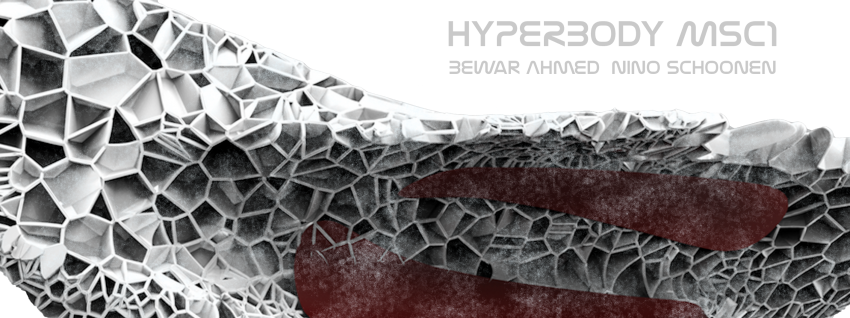|
|
| (6 intermediate revisions by one user not shown) |
| Line 1: |
Line 1: |
| | __NOTITLE__ __NOTOC__ | | __NOTITLE__ __NOTOC__ |
| | | | |
| − | '''TUD 4''' | + | '''Pattern research''' |
| | | | |
| − | [[File:Banner_Bewar_&_Nino.jpeg | 850px]] | + | [[File:G4-Banner_Bewar_&_Nino.png | 850px]] |
| | | | |
| | ---- | | ---- |
| Line 41: |
Line 41: |
| | </div></div> | | </div></div> |
| | <br> | | <br> |
| − |
| |
| − |
| |
| − |
| |
| − |
| |
| − | [[File:G4-Nature_cells.png|850px]]
| |
| − |
| |
| − |
| |
| − | == The Research ==
| |
| − |
| |
| − | '''What is the influence of cell structures towards the bending behavior of the TPE?'''
| |
| − |
| |
| − | The Research method:
| |
| − |
| |
| − | 1. Choosing one fragment of our furniture
| |
| − |
| |
| − | 2. Requirements of that one fragment
| |
| − |
| |
| − | 3. Cell structures research (causing it to be soft, hard, stif, flexible, strong or weak etc.)
| |
| − |
| |
| − | 4. 3D printing the above cell structures
| |
| − |
| |
| − | 5. Testing and evaluating the cell structures
| |
| − |
| |
| − | 6. Conclusion for the choice of structure.
| |
| − |
| |
| − |
| |
| − | == Pattern studies ==
| |
| − |
| |
| − | [[File:G4-research_1.jpg|400px|border]]
| |
| − | [[File:G4-research_2.jpg|400px|border]]
| |
| − |
| |
| − | [[File:G4-research_6.jpg|850px|border]]
| |
| − | [[File:G4-research_7.jpg|850px|border]]
| |
| − | [[File:G4-research_8.png|850px|border]]
| |
| − | [[File:G4-research_9.jpg|850px|border]]
| |
| − | [[File:G4-research_10.jpg|850px|border]]
| |
| − |
| |
| − |
| |
| − |
| |
| − | '''AMOLF Patterns'''
| |
| − |
| |
| − | [[File:G4-Amolf_6_pattern.png|850px|border]]
| |
| − | [[File:G4-research_4.jpg|400px|border]] [[File:G4-Amolf_1_pattern.png|400px|border]]
| |
| − |
| |
| − |
| |
| − | == Translation to Grasshopper ==
| |
| − |
| |
| − | Now it was our task to think of selecting certain structures, and translating them in a three-dimensional way. What should be mentioned i that there can be made many more interesting structures, but for now we've made a selection of three different strategies of structures that result in a different bending behaviour. The translation into Grasshopper has been a very helpfull excersice for us, it made us understand the logic of Grasshopper better. We can use this knowledge and skills to make even better structures in a later research, for now; let's focus on our three selections.
| |
| − |
| |
| − |
| |
| − | [[File:G4_Wireframe_Render.png|266px|border]]
| |
| − | [[File:G4_Sponge_Render.png|266px|border]]
| |
| − | [[File:G4_Voronoi_Render.png|266px|border]]
| |
| − |
| |
| − |
| |
| − | What should be mentioned is that all the structures are made for experiment prints; to test the behaviours of these structures with different porosities, wire thicknesses et cetera (defined with attractors).
| |
| − |
| |
| − |
| |
| − |
| |
| − | [[File:G4-Wireframe_Grasshopper.png|850px|border]]
| |
| − |
| |
| − |
| |
| − | [[File:G4-Voronoi_Grasshopper.png|850px|border]]
| |
| − |
| |
| − |
| |
| − | [[File:G4-Spheres_Grasshopper.png|850px|border]]
| |
